I have bought the annual Friendship Book for many years. It provides a thought for each day of the year, offering information about the lives of famous people as well as anecdotes about the author’s experiences. The written illustrations are full of thought-provoking ideas and, although it is not a religious book, I find it a source of inspiration for sermons and letters for the church magazine.
The intention is to read one short section a day, but I find the book a real page-turner and read it from cover to cover within a week. Whilst I sense the author is a Christian, The Friendship Book is suitable for anybody. If one day’s snippet does not prove helpful, chances are the following reading will. On more than one occasion, the book stops you in your tracks, demanding attention and careful reflection. I have at least 15 years worth of The Friendship Book annuals, and I am fascinated about where the writer gets his information. He is remarkably well informed, and the books reveal countless treasures. Writing one Minister’s Letter a month is sufficient pressure for me, whereas the author manages to write a thought for each day every year. All my copies of The Friendship Book sit on my bookshelf, where I have filed them after extracting any ideas for sermons and magazine articles. I realise this is a waste of a resource, and I should read and reread the books often. Rather than placing it on a shelf, the book could sit on an occasional table where people could pick it up, open any page and be well rewarded. The Friendship Book has become a friend. I recommend it to anyone who likes to have snippets of information rather than essays.
0 Comments
Specks and Planks: Stories of hope, humility and humanity is a great book. Someone introduced me to the book before Lent to use as a Bible study. Yet, I found reading it to myself far better than having it read to me. Each chapter is only four pages, so if you do not like one of the chapters, you know there will be another one along very shortly that you may like. I am happy to say that I enjoyed every single one. It was a joy from chapter one to chapter thirty-four.
It is the sort of book that has to be savoured and not read quickly, just like superior cheese or fine wine. It benefits from being read intentionally but at a nice, slow pace so that you can pick up all the nuances. Jeff Lucas sprinkles it with humour making it so enjoyable, I did not want it to end. I enjoyed the writing quality and how Lucas made me question my thinking by gently offering alternative viewpoints. He is very Christ-centric and suggests a solution to world peace, which involves the world collaborating on a giant jigsaw. It is Lucas’s sideways looks and creative thinking that makes the book an absolute gem. There are some powerful stories (for instance, chapter 32), but there are many light-hearted ones that meant I finished the book quite quickly, despite attempting to take my time. Jeff Lucas’s theology is similar to my own. He sees Jesus in much the same way as I, offering continual love and being continually available. Whilst on occasions it may seem that he is hidden, Jesus is always there for you. Specks and Planks is very up to date. Jeff Lucas wrote it during the outset of Covid-19 and offers comfort as well as intelligent insights into the New Testament. I looked forward to my spare hours when I could sit down and read, and I would happily reread the book. The book is suitable for any Christian who enjoys a cup of tea and a good book in the morning or afternoon. Although there are moments of profound thinking, it is generally a gentle read. To benefit from the text, you need to read it slowly because it gives you lots to think about. You will find yourself making time to read it and relax. 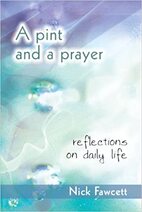 Title: A Pint and a Prayer: Reflections on Daily Life Author: Nick Fawcett Published: 1st January 2006 Publisher: Kevin Mayhew Ltd. ISBN13: 978-1844175192 Number of Pages: 32 Available from: Amazon I have long admired Nick Fawcett. I have, in my possession, two of his books called No Ordinary Man (book 1 and 2) and two books entitled A Prayer for All Seasons (book 1 and 2). They are lengthy books, more reference than narrative for me, so I was delighted to receive this little book, A Pint and a Prayer, published in 2006. The 32-page book can be read from cover to cover, which takes approximately 45 minutes. Nick Fawcett, in his introduction, says he wrote it to show faith and life are inextricably linked, and prayer touches people wherever they are. So, through various ordinary events, such as taking the car to a service, a football match, playing golf, he links an observation about daily occurrences with a prayer.
Personally, whilst I enjoyed the book, I did not find anything new. Nevertheless, I like some of Fawcett’s ideas, such as using rather than abusing your gifts. He uses the analogy of a car running better after undergoing a service, to suggest that we should clear away anything that undermines our performance and prevents us from realising our true potential. He advises us to look beyond people's masks and labels and recognise the intrinsic worth of all. We need to understand what we can tackle and what we cannot, and we should appreciate everything that is shaping us. Upon reflection, you can use the book to take you much deeper. For example, there is a lovely poem about computer games, through which Fawcett explores how he is being shaped, and so reflecting upon that, you can think about the things that are shaping you. What are the influences making you the person you are? Do you need to change anything? Are you happy with the journey? Do you recognise the forces at work shaping you? Do you recognise the power of friends, family, social media, television, and newspapers? A Pint and a Prayer is a good read. It is quick, and on every page, there is something upon which to reflect. For that reason, I recommend it. This book is especially useful during the season of Lent to help prepare for Easter. It allows you to dwell upon some of the questions prompted and helps you understand your relationship with God. And for that, I am recommending it even more. There is no right or wrong way to write a book review. For some, writing “I liked this book” is good enough, but many writers prefer in-depth feedback and critique. When Martin set himself then challenge to read and review a book per week during Lent, he asked me for advice. I have written many reviews, and new authors have sent me copies of their books in exchange for honest opinions. So, I thought I would share how I write a book review. Firstly, write a brief description of the book. What is it about? Is it fiction or non-fiction? To what genre does it belong? Do not give anything away, especially the ending, but it is useful to tell potential readers a little about the narrative to entice them. Also, mention whether it is part of a series or a stand-alone. Is this the author’s first work, or are they a well-established writer? For example: Ancient Indian knowledge and wisdom have been expressed through storytelling for thousands of years. With this in mind, Limesh Parekh wrote his first business book Cracking the CRM Code in fiction format. CRM, which the author fails to define in the book, stands for Customer Relationship Management and is a useful process for businesses to interact with their customers. What did you like about the book? Even if you did not enjoy it, you can find something positive to say. Was it well written? Did it contain interesting ideas or characters? What made you keep reading? Mention the emotions you felt, whether the author made you laugh or cry. Could you relate to the subject? Did you learn something new? For example: Many business books and manuals are nondescript and boring, whereas Limesh Parekh keeps the reader engaged with anecdotes, stories and quotes. Rather than learning how to use CRM, the characters show the process of purchasing and using the software, which is far more enlightening than a step-by-step guide. For some, the hardest part of writing a review is mentioning the things they did not like. It is so easy to tell someone you liked their work, rather than criticise them. Yet, even if it is unpleasant to hear, authors appreciate honesty and take on advice and comments in their future writings. If you found the book uninteresting, say so. Perhaps you were not the intended audience. Was the narrative easy to follow? Did you dislike any of the characters or ideas? Were there too many mistakes? (Be aware, typing errors are sometimes the fault of the editor and publisher, rather than the author.) For example: English is presumably not the author's first language, hence the sentences do not always flow, and the punctuation is far from perfect. At times, it is difficult to work out which character is speaking, making it a little confusing to follow. Why should other people read this book? Did your reading experience benefit you in any way? Was it entertaining or educational, or was it a waste of your time? To whom would you recommend the book? Was it written for people with particular interests? Is it suitable for older or younger readers? Did it remind you of any other books you had read? For example: Cracking the CRM Code is written for business-minded people who understand the jargon and acronyms, many of which are unexplained. As a layperson, some of the information went over my head, but the fiction format helped hold my interest. The final sentence of your review should indicate your overall impression of the book. You may have mentioned both positive and negative points, but which opinion comes out strongest? Some people find it easier to end their review with a rating out of 5 or 10 to indicate how much they enjoyed the book. For example: Cracking the CRM Code has the potential to be a big hit with small business owners and business consultants. (3/5 Stars) Written by Hazel
www.hazelstainer.wordpress.com The Gospel of John has a quality all of its own. It is a terrific gospel written, tradition tells us, by John, son of Zebedee, a "son of Thunder", the brother of James, around AD 85-90. This places the gospel after the destruction of the temple in AD 70, but before John's exile to the island of Patmos. Its scope is cosmic. It spans the time between the beginning of the world up until it was written and the promise of eternity. In a language that is poetic and beautiful, the Gospel of John is symbolised by an eagle because it is a gospel that soars high into the sky, grasping concepts of universal importance. Yet, John also pinpoints minutiae.
The Gospel of John is unique in that it goes against the Synoptics. It covers at least three Passovers, whereas the Gospels of Matthew, Mark and Luke only mention one. It contains the seven "I am" statements of Jesus: Bread of Life; the Light of the World; the Gate, the Good Shepherd; the Resurrection and the Life; the Way, the Truth and the Life; and the True Vine. John also mentions seven miracles or "signs": turning water into wine, healing the nobleman's son, curing the lame man, feeding 5000 people, walking on water, giving sight to the blind, and raising Lazarus from the dead. There are no parables in the Gospel of John because John wants to focus on the divinity of Jesus as the son of God, but also his humility and compassion. He was fully human and fully divine. John wrote after the other Gospels, so he not only provided a first-hand account because he was there at the time of Jesus, John also used material from the other gospels together with other sources. John writes after the fall of the Temple, which in effect was God’s house, so he writes to a people who were persecuted and rejected and whose faith was, in some respect, in tatters because of the destruction and the realisation that God was not there. He was giving them hope for the future. It is a good read. It is fast-paced and contains some great characters, for example, Nicodemus, the Samaritan woman at the well, the lame man by the pool, the adulterous woman, the blind man, and Lazarus, who rose from the dead. In some detail, John includes the journey of Jesus through Jerusalem, riding on a donkey to his death. He also records the resurrection and Jesus' activities after he rose. John finishes with this verse: "Jesus did many other things as well. If every one of them were written down, I suppose that even the whole world would not have room for the books that would be written." I commend this book because it is awe-inspiring and, if true, then why would you not believe that Jesus Christ came because "For God so loved the world that he gave his one and only Son, that whoever believes in him shall not perish but have eternal life." (John 3:16)
Home at Last by Ruth Pearson is about faith journeys and trusting in God during challenging times. Ruth uses Biblical stories such as the Prodigal Son, Joshua, and Ruth and Naomi to demonstrate a journey in faith, while focusing on keywords, including relationship, engagement, trust, obstacles, love, forgiveness and promise. There is a sense of hope that this journey is not a road we have to travel alone. Characters in the Bible, as far back as Noah and Abraham, conducted faith journeys. Now it is our turn to find and have a fulfilling relationship with God.
The book contains three questions, to which it continually refers: 1. How important is God in your life? 2. Do you have a personal relationship with God? 3. Where are you planning to spend eternity? The first two are well-used in books of this nature, but I had not thought about the third question concerning our place in eternity. So, this was particularly useful for me. I liked the idea we should have a plan but that it is God’s plan which is paramount, and that we have an integral place in God’s plan. For example, Rahab had no idea about Jesus Christ, yet she played her part in God’s plan and became part of Jesus’ family tree. This reminds us that, even if things do not go well for us, we must trust we are part of a bigger plan where God is in control. While we cannot see our place in eternity, we will one day look back and realise that, because of what we did, positive consequences occurred. Ruth includes some good exercises, such as describing who you think you are. E.g. I am a Christian, I am an uncle, I am a child of God etc. A list of ten “I am”s remind us of our importance. These exercises helped me extract a great deal from this book to guide my thinking and the progression of my faith journey, aligned with God’s will. 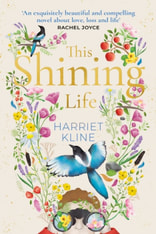 Title: This Shining Life Author: Harriet Kline Rating: 4/5 Expected Publication: 3rd June 2021 Publisher: Doubleday ISBN13: 9780857526274 Ollie's Dad died. Richard had an incurable brain tumour, and before he passed away, he sent everyone a special present. He also told Ollie that "being alive was like a puzzle and it was all falling into place." Ollie is autistic. He thinks his father left him a puzzle to solve. Could it involve the gifts? Why won't anyone help him solve the puzzle?
This Shining Life by Harriet Kline is a heartbreaking tale about a family coming to terms with death. Told from several people's point of view, Kline explores different portrayals of grief. Ollie's mum wants to stay in bed; his aunt wants life to carry on; his maternal grandmother tries to exert control; his paternal grandmother wishes she could understand her grandson; and his grandfather has no idea what is going on. No one has time for Ollie and his obsession with his puzzle. Before Richard's death, Ollie dominated family life. Ollie had a strict routine, always had a few spare pairs of socks with him because he hated dirty ones, and had meltdowns if his parents used the "wrong" tone of voice. Without his familiar habits, Ollie's life was a mass of confusion - an apt metaphor for the grief the rest of the family experienced. With a contemporary novel such as This Shining Life, there is no "happy ever after". People do not come back from the dead. There is no answer to the meaning of life. Grief is a long process and different for everyone. It causes depression, anger and confusion, but hidden under all these negative feelings is love. Harriet Kline takes death and grief seriously but adds a touch of humour to the narrative for the reader's benefit. It is not a light read, nor is it markedly profound. Instead, This Shining Life is painfully honest, and for that reason, it is beautiful. 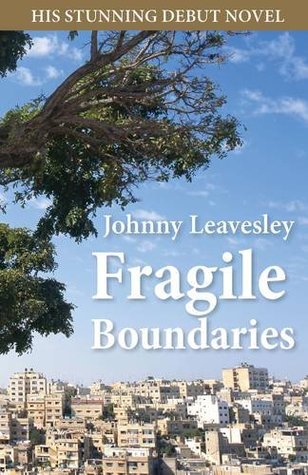 Description: Jayda Talhoun is the adored daughter of a wealthy Jordanian businessman. Driven to have a successful career in her own right, she is determined not to live a comfortable but servile life in Amman. After persuading her father to send her to London, she encounters an amoral society stricken with lust, greed jealousy and duplicity. When she meets insurance broker William Clive, she is swept up in a romance which is soon challenged by their past, their faiths, their families, their very essences... Set in London and Amman, this novel asks whether love and ambition can overcome the boundaries marked by birthplace and background. Rating: 4.09 out of 5 Fragile Boundaries is the debut novel of English lawyer Johnny Leavesley. It is a contemporary romance with a heartbreaking ending that, as well as relationships, explores themes of racial differences. Set in London and Amman, Jordan, this is the story of two different people, one British, one Arab, and their determination to be accepted as a couple.
Jayda Talhoun, a woman in her early twenties, has temporarily moved to London to attend university. At a party she meets William Clive who falls in love with her at first sight. After a little persuasion, Jayda agrees to go out with William and it is not long before they consider themselves an item. The next challenge for William is to be accepted by Jayda’s family and so the two of them fly out to Jordan. How will the Talhoun’s react to their Muslim daughter dating a supposedly Christian, foreign man? One family member that it appears will take a lot of effort to get on the good side of is the eldest brother, Jamil, who is completely against his sister’s new relationship. Back home, however, William’s one time fling with the emotionally unstable Lady Caroline is about to have repercussions. Fragile Boundaries touches on some very real issues within the world today. Boundaries such as differences in culture and religion can be very difficult to cross. The characters from Jordan view Britain as having a very weak culture due to it being very diverse however their own culture and values are very strong. Sexism is still an issue in Arab families which can be seen through Jayda’s relationship with her older brother and her father. The fact that she is at university is an anomaly in itself, but introducing an English gentleman into the family may be pushing the limit. It took a little while for the story to get going and to work out (without reading the blurb) whom the main characters were. Both William and Jayda were likeable characters, which made the ending all the more shocking and emotional. Although written in the third person it was a little confusing to keep up as the writer quickly changes between the characters’ point of views; sometimes even within the same paragraph. It was not until the very end that the story begun to get exciting but then it sort of fizzled out, which was a little disappointing. For readers who enjoy reading about different cultures and like a little bit of romance then give this book a go. But do not be expecting any happy endings…
"Finding Noah's ark ... would be fun, but it wouldn't be instructive... wouldn't teach us about God or each other." This is the view of Amanda Hope Haley in The Red-Haired Archaeologist Digs Israel, a book about the author's travels in the land of the Bible. As a Harvard-trained biblical archaeologist, Haley spent time in Israel excavating areas of land where Jesus once walked. Her goal was not to unearth evidence of Jesus but to discover what life was like for the everyday person during Christ's time on Earth.
Only the first couple of chapters mention items and foundations Haley found on her digs. After that, Haley describes her holiday in Israel with her mother, father and husband. She writes honestly, admitting to tourist errors she and her family made. She describes the places she visited as though speaking to a reader who plans to make the trip too. Yet, it is far from a holiday diary. In each location Haley visited, she describes the history of the place, the biblical references, the antagonism between the Jews and Muslims, and its current state. She discovers why Jesus chose to preach in certain areas, locates towns and cities mentioned in the Bible, and notes how much places have changed since the 1st century. It is interesting to learn how the three religions, Judaism, Islam and Christianity, both merge and alienate each other. Haley visited areas that banned Jews, yet as a Christian, she could enter. She paints Israel as a dangerous place but also highlights its beauty spots. The title, The Red-Haired Archaeologist Digs Israel, is misleading because there is little physical digging mentioned. Haley only documents a few of her finds, and readers do not learn a great deal from them. On the other hand, Haley's metaphorical dig into the history of Israel proves fruitful, enhanced from her first-hand experience. Those looking for a book about archaeology may be disappointed with The Red-Haired Archaeologist Digs Israel but those wishing to learn more about the biblical land of Israel, past and present, will appreciate Haley's knowledge. For Christian readers, this book will enhance their understanding of the Bible.
A Song for Issy Bradley is the captivating debut novel of talented author Carys Bray. Set in modern day Britain this heart-breaking story shows a family’s struggle to overcome the loss of their youngest child whilst also adhering to the strict rules of their Mormon religion.
It begins with seven-year-old Jacob’s birthday and Mum, Claire, is rushing around with last minute party preparations, whilst her husband, Bishop Ian, is off attending to his religious duties. Although Claire is aware that Issy is feeling poorly she does not realize how serious it is until much later - too much later. After being rushed to hospital with meningitis Issy’s prognosis is not good. Despite Ian’s blessings and prayers no miracle occurs and Issy passes away the following day. The main storyline is about how the characters cope with this shockingly sudden loss. Claire hides herself away from everyone by remaining in bed for weeks and ignoring her duties and her family’s pleas. Ian, worried that Claire is not grieving in the proper Mormon way, throws himself even deeper into religion by focusing on what is expected of him as a Bishop rather than concentrating on his children’s needs. Zipporah, the eldest, is expected to become the woman of the house until Claire returns to “normal”. As well as studying for her exams and doing the housework, Ian insists she attend all church events for people her age. Alone she worries about love, marriage and falling into sin; she would really like to be able to talk to her Mum. Alma, on the other hand, is becoming more and more rebellious. Not only does he have a stupid name (Alma was named after a prophet in the book of Mormon) his ambition to become a professional footballer is not conducive to living the gospel. Although he makes jokes and rude remarks about religious ideas there is still a part of him that believes, and despite his attitude it is clear he is deeply affected by Issy’s death. Jacob’s reaction is the most heart wrenching of all. Being so young he believes everything he is told especially the bible stories he hears at church. If Jesus can bring people back to life, perhaps Issy can live again? He puts his faith in God and waits in vain for his sister’s miraculous return. The story is shown through each of these five character’s point of views, which is interesting as the reader gets a chance to see how each person’s actions affect the others and gives a greater insight into character developments. It is gratifying to witness, albeit slowly, the family pick themselves up and begin to work together and carry on. As to be expected with a story about Mormons there is a large amount of bible quotation. Many are from the Book of Mormon but there are numerous biblical references that Christians of all denominations will appreciate. The author was raised as a Mormon so it can only be assumed that all the details are accurate. Non-believers, however, should not be put off from reading this beautiful book: it is the way in which people deal with loss that is important and there is no preaching at the reader or attempts to convert. This novel is highly recommended for female and male readers alike, particularly those who enjoy emotionally charged stories; and, of course, those interested in religion will love this book too. |
©Copyright
We are happy for you to use any material found here, however, please acknowledge the source: www.gantshillurc.co.uk AuthorRev'd Martin Wheadon Archives
June 2024
Categories
All
|
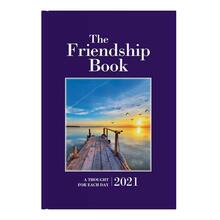
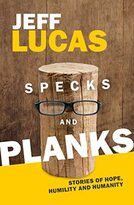
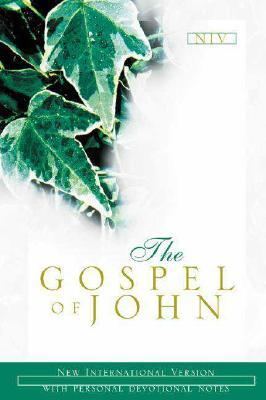
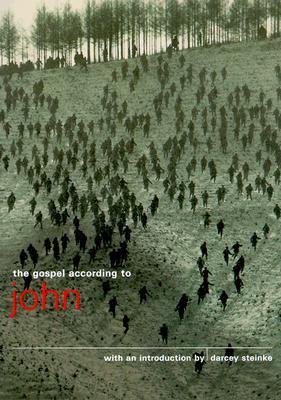
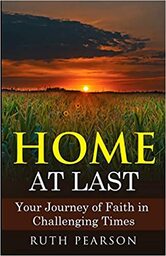
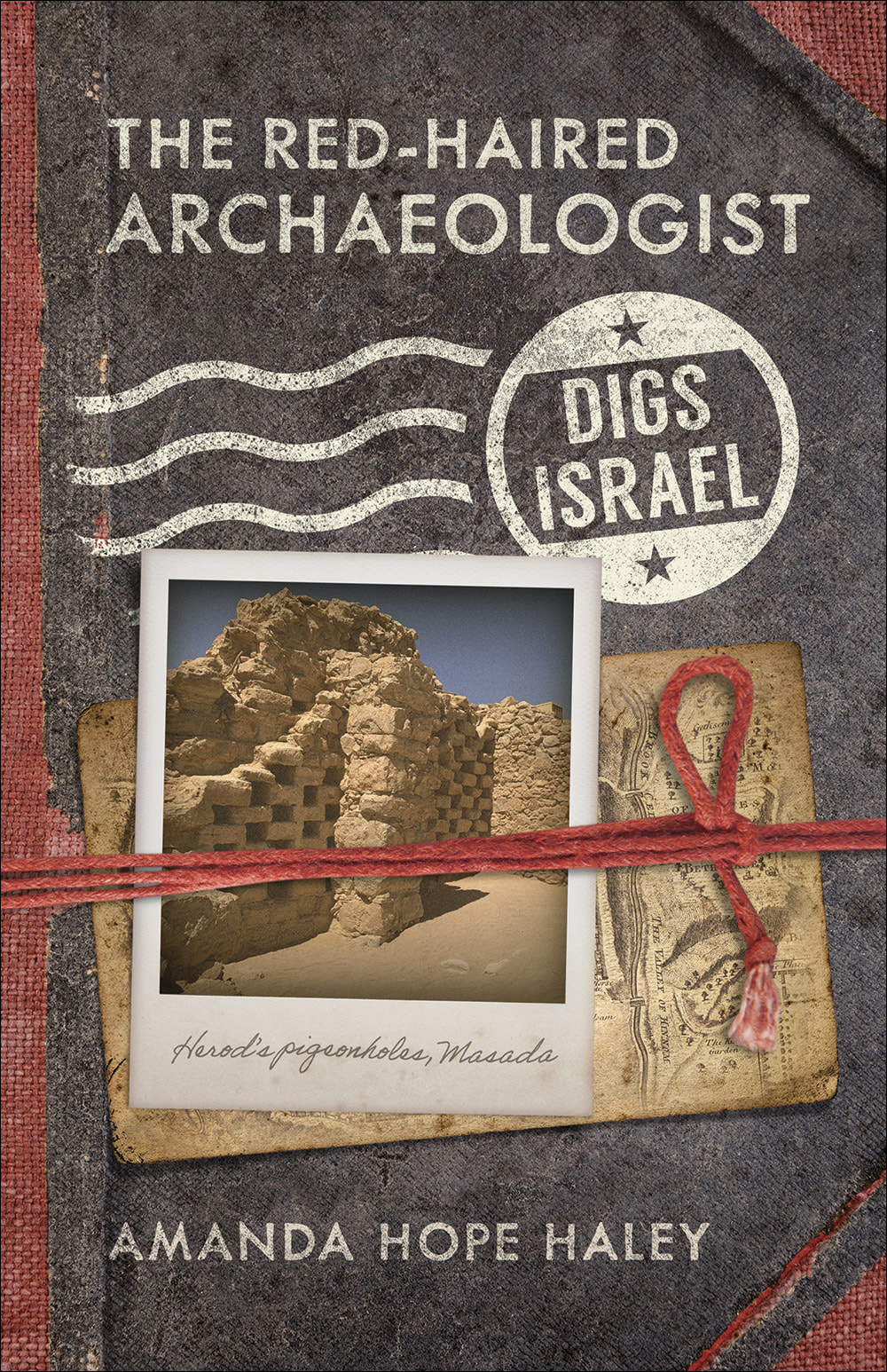
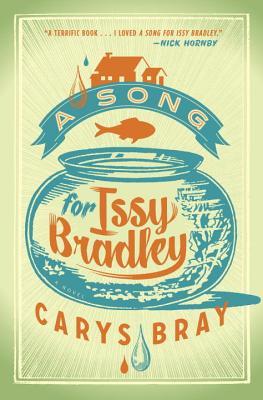
 RSS Feed
RSS Feed